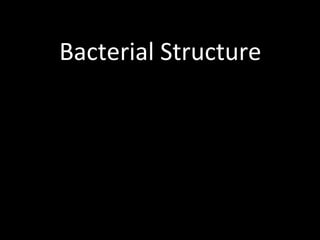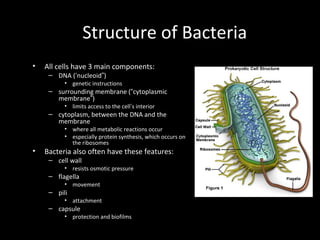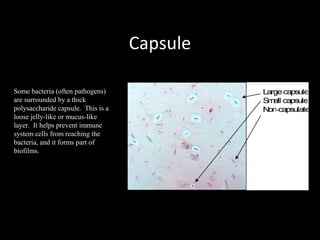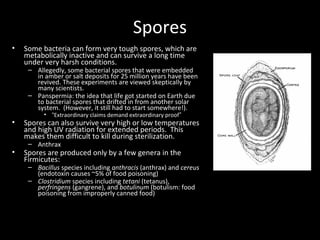Bacteria have three main cellular components - DNA, a surrounding cytoplasmic membrane, and cytoplasm. The cell envelope includes additional layers like the cell wall that resists osmotic pressure. Membrane proteins and transporters control the movement of molecules in and out. Some bacteria have flagella for movement, pili for attachment, and capsules for protection. A few bacteria can form spores that allow survival in harsh conditions.












